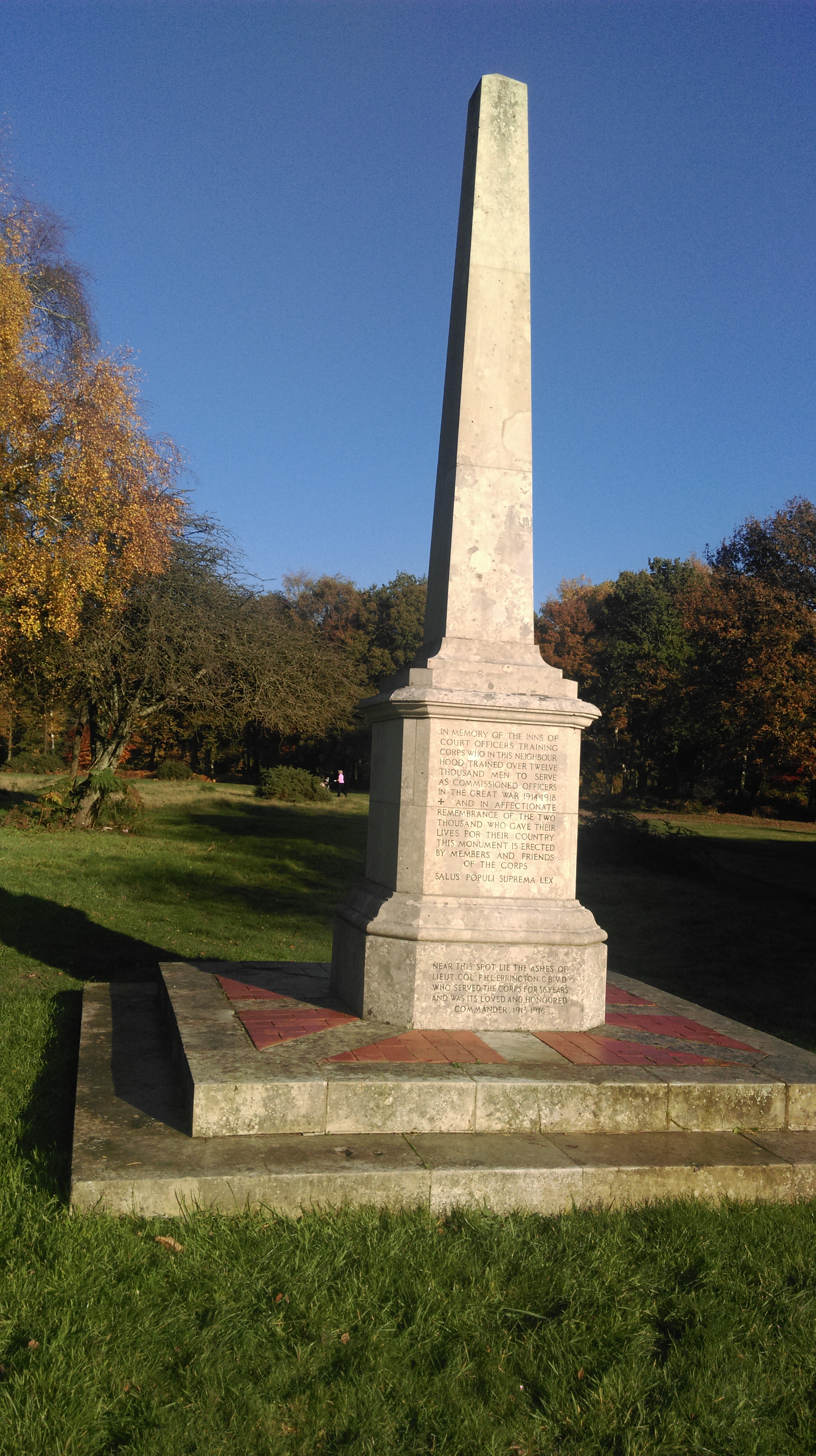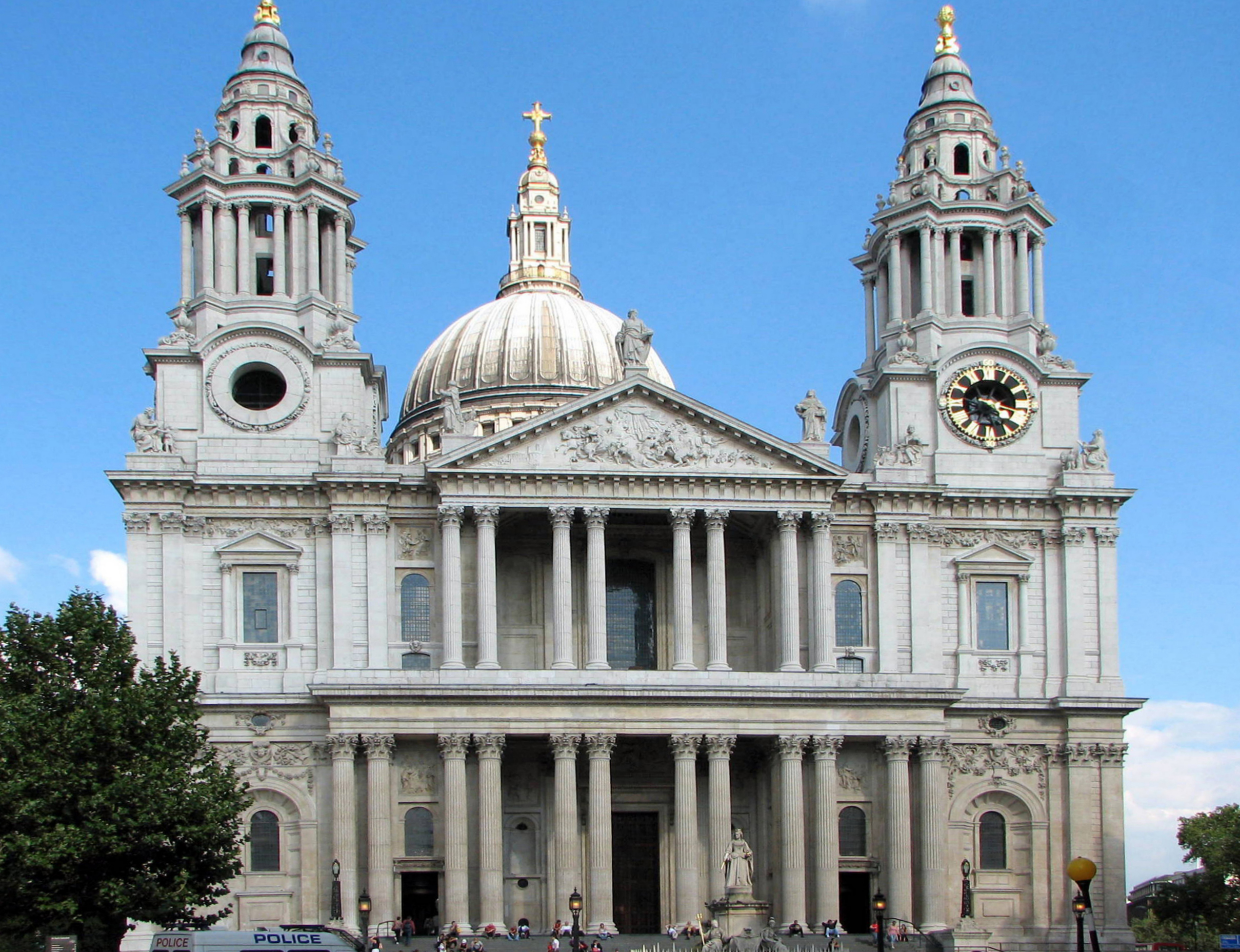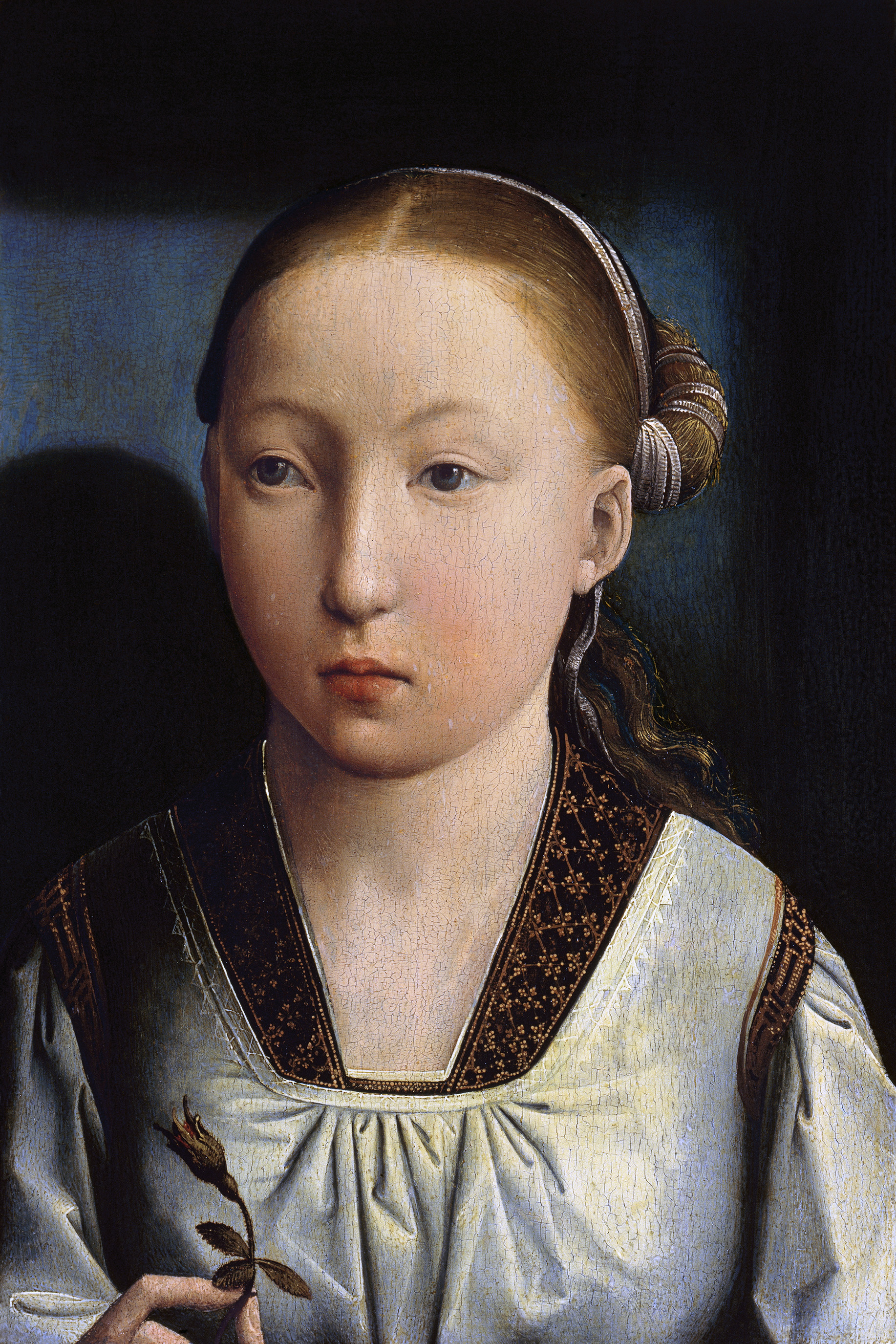|
Dean Incent's House
Dean Incent's House is a 15th-century timber-framed house in Berkhamsted, Hertfordshire, England. It is reputed to be the birthplace of John Incent (c. 1480 – 1545), a dean in the Church of England who held office at St Paul's Cathedral from 1540 to 1545. The two-storey house is situated on Berkhamsted High Street. Since 1950 it has been a Grade II* listed building. History The oldest domestic building on Berkhamsted High Street is probably no. 173. However, Dean Incent's House has a rival claim. Evidence exists that an older medieval building stood to the rear of the house, at right angles to the High Street. Part of this older house was incorporated into the Tudor house which was built facing the High Street. It is thought that the house may originally have been used as a public meeting hall before the construction of the Court House on the opposite side of the road. In the late 15th century, the house belonged to Robert and Katherine Incent. They were a family of high sta ... [...More Info...] [...Related Items...] OR: [Wikipedia] [Google] [Baidu] |
Town House
A townhouse, townhome, town house, or town home, is a type of terraced housing. A modern townhouse is often one with a small footprint on multiple floors. In a different British usage, the term originally referred to any type of city residence (normally in London) of someone whose main or largest residence was a country house. History Historically, a townhouse was the city residence of a noble or wealthy family, who would own one or more country houses in which they lived for much of the year. From the 18th century, landowners and their servants would move to a townhouse during the social season (when major balls took place). Europe In the United Kingdom, most townhouses are terraced. Only a small minority of them, generally the largest, were detached, but even aristocrats whose country houses had grounds of hundreds or thousands of acres often lived in terraced houses in town. For example, the Duke of Norfolk owned Arundel Castle in the country, while his London house, No ... [...More Info...] [...Related Items...] OR: [Wikipedia] [Google] [Baidu] |
Edward IV Of England
Edward IV (28 April 1442 – 9 April 1483) was King of England from 4 March 1461 to 3 October 1470, then again from 11 April 1471 until his death in 1483. He was a central figure in the Wars of the Roses, a series of civil wars in England fought between the Yorkist and House of Lancaster, Lancastrian factions between 1455 and 1487. Edward inherited the House of York, Yorkist claim when his father, Richard, Duke of York, died at the Battle of Wakefield in December 1460. After defeating Lancastrian armies at Mortimer's Cross and Battle of Towton, Towton in early 1461, he deposed King Henry VI and took the throne. His marriage to Elizabeth Woodville in 1464 led to conflict with his chief advisor, Richard Neville, Earl of Warwick, known as the "Kingmaker". In 1470, a revolt led by Warwick and Edward's brother George, Duke of Clarence, briefly Readeption of Henry VI, re-installed Henry VI. Edward fled to Flanders, where he gathered support and invaded England in March 1471; ... [...More Info...] [...Related Items...] OR: [Wikipedia] [Google] [Baidu] |
Inns Of Court Regiment
The Inns of Court Regiment (ICR) was a British Army regiment that existed under that name between May 1932 and May 1961. However, the unit traces its lineage back much further, to at least 1584, and its name lives on today within 68 (Inns of Court & City and Yeomanry) Signal Squadron, as part of 71st (City of London) Yeomanry Signal Regiment. Early history Back in the 14th to 16th centuries, judges were called upon to perform functions that, in modern times, would hardly be considered to come within judicial office. Accordingly, members of the Inns of Court found themselves called to fight in the wars of King John or against Robert the Bruce. One such defence of Medieval London was organised in 1381 against Wat Tyler, during the Peasants' Revolt (when the Chief Justice was killed). In 1467, the Chief Justice of the Exchequer, then Recorder of the city of London, was instrumental in defeating a Lancastrian attack on the city of London. Further accounts, such as Henry Machyn's di ... [...More Info...] [...Related Items...] OR: [Wikipedia] [Google] [Baidu] |
Berkhamsted School
Berkhamsted School is an independent day school in Berkhamsted, Hertfordshire, England. The present school was formed in 1997 by the amalgamation of the original Berkhamsted School, founded in 1541 by John Incent, Dean of St Paul's Cathedral, Berkhamsted School for Girls, established in 1888, and Berkhamsted Preparatory School. The new merged school was initially called Berkhamsted Collegiate School, but reverted to Berkhamsted School in 2008. In 2011 Berkhamsted School merged with Heatherton House School, a girls' preparatory school in Amersham, to form the Berkhamsted Schools Group. The Group acquired Haresfoot School in Berkhamsted and its on site day nursery in 2012, which became Berkhamsted Pre-Preparatory School for children aged three to seven, and Berkhamsted Day Nursery. Berkhamsted School is a "diamond school" in which pupils are taught coeducationally in the Pre-Prep School, Prep School and Sixth Form, but independently in the traditional Senior years, between the a ... [...More Info...] [...Related Items...] OR: [Wikipedia] [Google] [Baidu] |
Monastic Hospital
Medieval medicine in Western Europe was composed of a mixture of pseudoscientific ideas from antiquity. In the Early Middle Ages, following the fall of the Western Roman Empire, standard medical knowledge was based chiefly upon surviving Greek and Roman texts, preserved in monasteries and elsewhere. Medieval medicine is widely misunderstood, thought of as a uniform attitude composed of placing hopes in the church and God to heal all sicknesses, while sickness itself exists as a product of destiny, sin, and astral influences as physical causes. On the other hand, medieval medicine, especially in the second half of the medieval period (c. 1100–1500 AD), became a formal body of theoretical knowledge and was institutionalized in the universities. Medieval medicine attributed illnesses, and disease, not to sinful behaviour, but to natural causes, and sin was connected to illness only in a more general sense of the view that disease manifested in humanity as a result of its fallen sta ... [...More Info...] [...Related Items...] OR: [Wikipedia] [Google] [Baidu] |
Dean Incent's House By J
Dean may refer to: People * Dean (given name) * Dean (surname), a surname of Anglo-Saxon English origin * Dean (South Korean singer), a stage name for singer Kwon Hyuk * Dean Delannoit, a Belgian singer most known by the mononym Dean Titles * Dean (Christianity), persons in certain positions of authority within a religious hierarchy * Dean (education), persons in certain positions of authority in some educational establishments * Dean of the Diplomatic Corps, most senior ambassador in a country's diplomatic corps * Dean of the House, the most senior member of a country's legislature Places * Dean, Victoria, Australia * Dean, Nova Scotia, Canada * De'an County, Jiujiang, Jiangxi, China United Kingdom * Lower Dean, Bedfordshire, England * Upper Dean, Bedfordshire, England * Dean, Cumbria, England * Dean, Oxfordshire, England * Dean, a hamlet in Cranmore, Somerset, England * Dean Village, Midlothian, Scotland * Forest of Dean, Gloucestershire, England * Dene (valley) common to ... [...More Info...] [...Related Items...] OR: [Wikipedia] [Google] [Baidu] |
Church Of St Peter, Great Berkhamsted
The Parish Church of St Peter, Great Berkhamsted, is a Church of England, Grade II* listed church in the town of Berkhamsted, Hertfordshire, in the United Kingdom. It stands on the main High Street of the town and is recognisable by its clock tower. The building is medieval in origin, the earliest part dating from c.1200, and the architecture spans at least five architectural periods, mostly 14th and 15th centuries. The church was altered greatly during the Victorian era, most notably undergoing a restoration by William Butterfield. It is one of the largest churches in Hertfordshire. Because of its proximity to Berkhamsted Castle, St Peter's has had a long association with Royalty, with the reigning monarch acting as patron to Berkhamsted rectors for several centuries. Many members of the congregation also worked in important positions for the Royal household. The church has counted among its worshippers such notable figures as the poet William Cowper and John Incent, who went ... [...More Info...] [...Related Items...] OR: [Wikipedia] [Google] [Baidu] |
Break With Rome
The English Reformation took place in 16th-century England when the Church of England broke away from the authority of the pope and the Catholic Church. These events were part of the wider European Protestant Reformation, a religious and political movement that affected the practice of Christianity in Western and Central Europe. Ideologically, the groundwork for the Reformation was laid by Renaissance humanists who believed that the Scriptures were the only source of Christian faith and criticized religious practices which they considered superstitious. By 1520, Martin Luther's new ideas were known and debated in England, but Protestants were a religious minority and heretics under the law. The English Reformation began as more of a political affair than a theological dispute. In 1527, Henry VIII requested an annulment of his marriage, but Pope Clement VII refused. In response, the Reformation Parliament (1532–1534) passed laws abolishing papal authority in England and d ... [...More Info...] [...Related Items...] OR: [Wikipedia] [Google] [Baidu] |
List Of Deans Of St Paul's
The dean of St Paul's is a member of, and chair of the Chapter (religion), Chapter of St Paul's Cathedral in London in the Church of England. The dean of St Paul's is also ''ex officio'' dean of the Order of the British Empire. The current dean (religion), dean is Andrew Tremlett, who was installed on 25 September 2022. List of deans High Medieval *1090–1107 Wulman *1107–1111 Ranulf Flambard ''(disputed)'' *1111–1138 William de Mareni *1138–1157 Ralph de Langford *1158–1180 Hugh de Mareni *1180–1199 Ralph de Diceto *1200–1216 Alard de Burnham *1216–1218 Gervase de Howbridge *1218–1227 Robert de Watford *1228–1231 Martin de Pattishall *1231–1241 Geoffrey de Lucy *1241–1243 William of Sainte-Mère-Eglise *1243–1253 Henry de Cornhill (priest), Henry de Cornhill *1253–1257 Walter de Saleron *1257–1260 Robert de Barton *1260–1261 Peter de Newport *January 1262–July 1262 Richard Talbot (Bishop of London), Richard Talbot *July 1262 – 1263 John de Eb ... [...More Info...] [...Related Items...] OR: [Wikipedia] [Google] [Baidu] |
Catherine Of Aragon
Catherine of Aragon (also spelt as Katherine, ; 16 December 1485 – 7 January 1536) was Queen of England as the first wife of King Henry VIII from their marriage on 11 June 1509 until their annulment on 23 May 1533. She was previously Princess of Wales as the wife of Henry's elder brother, Arthur, Prince of Wales. The daughter of Isabella I of Castile and Ferdinand II of Aragon, Catherine was three years old when she was betrothed to Prince Arthur, heir apparent to the English throne. They married in 1501, but Arthur died five months later. Catherine spent years in limbo, and during this time, she held the position of ambassador of the Aragonese crown to England in 1507, the first known female ambassador in European history. She married Arthur's younger brother, the recently ascended Henry VIII, in 1509. For six months in 1513, she served as regent of England while Henry VIII was in France. During that time the English crushed and defeated a Scottish invasion at ... [...More Info...] [...Related Items...] OR: [Wikipedia] [Google] [Baidu] |
Henry VIII Of England
Henry VIII (28 June 149128 January 1547) was King of England from 22 April 1509 until his death in 1547. Henry is best known for his six marriages, and for his efforts to have his first marriage (to Catherine of Aragon) annulled. His disagreement with Pope Clement VII about such an annulment led Henry to initiate the English Reformation, separating the Church of England from papal authority. He appointed himself Supreme Head of the Church of England and dissolved convents and monasteries, for which he was excommunicated by the pope. Henry is also known as "the father of the Royal Navy" as he invested heavily in the navy and increased its size from a few to more than 50 ships, and established the Navy Board. Domestically, Henry is known for his radical changes to the English Constitution, ushering in the theory of the divine right of kings in opposition to papal supremacy. He also greatly expanded royal power during his reign. He frequently used charges of treason and ... [...More Info...] [...Related Items...] OR: [Wikipedia] [Google] [Baidu] |








